Making Dreams Come True: Disney’s ”Four Cs” for
A Curious Omission from Walt Disney’s “Four Cs”
“This special secret, it seems to me, can be summarized in four Cs. They are curiosity, confidence, courage, and constancy…”~Walt Disney (emphasis added)
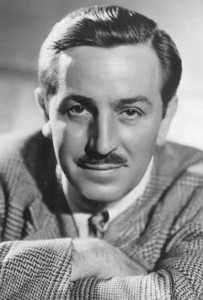
Walt Disney
(c. 1946, from Wikimedia Commons.)
Disney’s quote about the four Cs, above, is so popular with creatives and entrepreneurs that the fact that there is a missing word is almost shocking: that word is creativity. Why did Disney, one of history’s most creative individuals, not include creativity among his list of C-words? Should creativity be secretly enshrined as a fifth C?
Its absence warrants a look.
Here’s the entire quote:
“Somehow I can’t believe that there are any heights that can’t be scaled by a man who knows the secrets of making dreams come true. This special secret, it seems to me, can be summarized in four Cs. They are curiosity, confidence, courage, and constancy, and the greatest of all is confidence. When you believe in a thing, believe in it all the way, implicitly and unquestionable.”
Not to be overly analytical, but notice that the object of the “four Cs” is “making dreams come true.” Surely, creativity deserves mention! But, no, it doesn’t, Here’s why:
First, creativity is where dreams come from, not part of what makes them come true! It is related to “Disney’s four Cs” (the dreams part), but not one of the characteristics required for their realization (coming true). This is one reason, among others, why many books and workshops on creativity fall flat. They’re aiming at the wrong target. What really matters is not the ability to come up with creative things, as much as the ability to make them happen.
Second, it does not deserve a place among the “four Cs” because creativity is more commonplace, where the other four Cs are rather uncommon.
Creativity may seem uncommon, but if you think about it, it is the realization of creativity that is rare. In other words, there may be lots of creativity all around us, but we never see it because it is never actually created. (As someone interested in words, this begs an interesting question: if things dreamed up by our “creativity” are never “created,” is it really “creativity,” or is it imagination, misnamed?)
On the other hand, the four Cs are genuinely unusual:
We educate curiosity out of children through schooling that, by its hubris, claims more answers than it can provide. In a society obsessed with image rather than substance, true confidence is relatively unusual. We see the world through screens now; how much real courage is needed in that world? Constancy, the ability to stick with a thing in the face of obstacles, is a trait that requires discipline and practice. But creativity? Not so much.
In fact, the “four Cs” imply another c-word that creativity, does not: character, which means integrity, moral strength, backbone, and grit. This sense of the word character is not used much in 21st Century English—it has gone out of fashion, possibly due to its perceived decreasing importance.
Creativity, (by which we mean unrealized imagination) whether it is recognized as such or not, can be found in relative abundance. But, it takes character to carry any creative endeavor to fruition. Put another way, dreaming isn’t hard; but making dreams come true is. To accomplish that takes strengths of character, such as Disney’s four Cs: curiosity, confidence, courage, and constancy.
The First of Disney’s “Four Cs”—Curiosity
Of Disney’s “four Cs,” curiosity is probably the most curious (pun intended) because, unlike many human activities, curiosity does not seem to have a specific aim—you’re just curious because you are.
Oh, sure: you can be curious about something. But even then, it may not be for any particular reason. Curiosity implies a sort of aimlessness (the opposite of what I said previously about creativity).
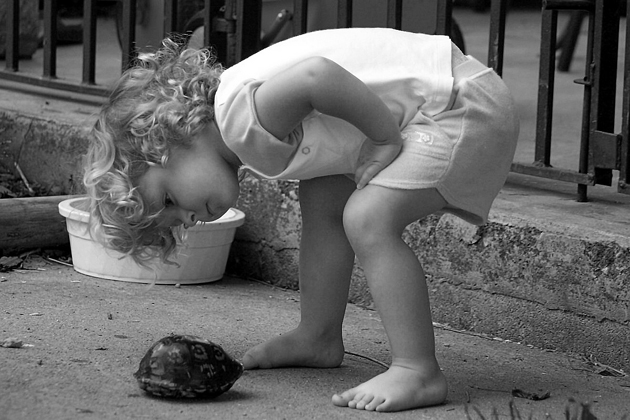
(Photo courtesy of Nathaniel Dunnigan’s blog.)
Curiosity is a passion for finding out, especially the “how” or “why” of something. It is the first step in nearly any endeavor that involves knowing or understanding. It can be a fascination with the new or different, or it can involve looking at an everyday thing in a new way.
It’s easy to see why it was the first of Disney’s “Four Cs”: it is the spark! But it is only the spark—it is not the flame. If not followed up with confidence, courage, and constancy, it’s just a brief, bright flash—momentarily enlightening.
Two thoughts:
First, be forewarned, being curious is not always appreciated! Asking too many questions can be perceived as impertinent or even hostile. (I’ve gotten myself into my share of trouble for being curious!) Perhaps that’s one of the reasons it is more visible or acceptable in children.
Second, why do adult lose their curiosity? Perhaps it is scared out of us (see the entry about “fear,” elsewhere on this blog). Or, perhaps it is education. Einstein noted, “It is a miracle that curiosity survives formal education.” Or, perhaps, as per thought number one, it’s just not seen as acceptable in adults. Wherever it goes, it needs to be cultivated to get it back.
Cultivating Curiosity
It is tempting to command, “Be curious!” and call that good. Unfortunately, like creativity, it does not seem to be consciously arrived at by following a set of formulaic rules. Instead, curiosity must be cultivated, like a growing plant. Here are some hints—not rules!—to help you cultivate your curiosity.
- Make time for curiosity. If you’re too busy to check something out for its own sake, you’re probably too busy. If you’re a clock-watching type, set aside part of your day for curious pursuits. If you a more open-ended type, put it on your check list.
- Be positive. Negativity kills curiosity. Negative attitudes and behaviors appear to shut down the parts of our minds that generate interest and crave more knowledge. So, to the best of your ability, have a positive attitude, think upbeat thoughts, do worthwhile things.
- Expose yourself to the unknown. If you like rock music, decide to force yourself to listen to classical for a week. Or if you’re a big soccer fan, switch to baseball (or tennis, or curling) to see what you can learn. (Or ballet!) If you detest mystery novels, that may mean you need to find a good one to read. You don’t need to make every choice a journey into the unknown, but do make a few, just to check them out!
Here are a few quotes on curiosity with which to water and fertilize yours:
The cure for boredom is curiosity. There is no cure for curiosity.~Dorothy Parker
I keep six honest serving-men,
They taught me all I knew;
Their names are What and Why and When
And How and Where and Who.~Rudyard Kipling
The best ideas aren’t hidden in shadowy recesses. They’re right in front of us, hidden in plain sight. Innovation seldom depends on discovering obscure or subtle elements but in seeing the obvious with fresh eyes. This is easier said than done because nothing is as hard to see as what’s right before our eyes. We overlook what we take for granted. Billions of tea drinkers observed the force of steam escaping from water boiling in a kettle before James Watt realized that this vapor could be converted into energy.~Richard Farson
And finally, one of my favorite:
Curiosity was framed. It was ignorance that killed the cat.”~Unknown
The Second of Disney’s “Four Cs”—Confidence
When Walt Disney used the word confidence in the famous “Four Cs” quote from sometime in the mid-twentieth century, it may have had a different connotation than it does now. A clue as to what he meant can be found in something else Disney said:
When we consider a new project, we really study it—not just the surface idea, but everything about it. And when we go into that new project, we believe it all the way. We have confidence in our ability to do it right. And we work hard to do the best possible job.”~Walt Disney (emphasis added)

Dr. Carol Dweck,
Stanford University
Noted Stanford psychologist Carol Dweck observed a continuum related to motivation she calls “mindset” about one’s own innate abilities. I hope I’m not misstating her ideas on motivation too much by linking them to confidence, but they help highlight an important aspect that deserves attention.
One end of the continuum represents what she calls a “fixed mindset,” and the other a “growth mindset.” For example, a person with a “fixed” mindset may be exceptionally smart, but if he believes that his intelligence is “fixed,” then his goal becomes to always prove how smart he is. Being “smart” is a comparative virtue—it is fixated on what others believe. So Mr. Fixed works to look smart and never look dumb. He takes success as token of his static intelligence, but he dreads failure because he sees it as an indication that his static intelligence is insufficient. So, he tends to focus on things he knows he can do to look smart, and avoid things that make him look dumb. A “fixed” mindset reinforces the superficiality that sometimes passes for “self-confidence.”
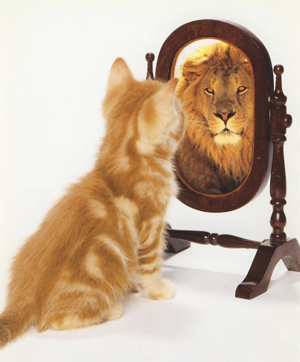
Not “I’m so cool!” but rather, “I can do it!”
(Photo courtesy of Phil Fragasso’s blog.)
On the other hand, a person with a “growth” mindset believes her abilities are flexible and can be improved with effort. Success and failure are measures of effort or lack of it, not innate ability. So, contrary to Mr. Fixed, above, Ms. Growth believes that whatever talents, skills, and “smarts” she may have can be grown through effort, persistence, and hard work. In her case, because success is evidence of her effort and hard work—not primarily her static innate abilities—failure becomes an opportunity to learn and improve through effort rather than crushing evidence of inability—part of a cycle that reinforces true confidence.
The pop-psychology through to today encourages the promotion of “self confidence” through constant congratulatory praise—even if it isn’t warranted, to the point that the importance of “feeling good about ourselves” has become a sort of psychological dogma. (Dr. Dweck’s research specifically addresses this problem. Simply put, she recommends that when praise is offered, we praise effort, not ability.) I propose that for this and other reasons, we have veered far too to a false “fixed” self-confidence, and neglected the “growth” confidence so sorely needed to make dreams come true.
Disney’s second C, confidence, does not refer to the superficial “self-confidence” formed from empty praise that suggests innate value whether there is any or not. Rather it is true, confidence, built and reinforced through positive, growth-centered action.
The Third of Disney’s “Four Cs”—Courage
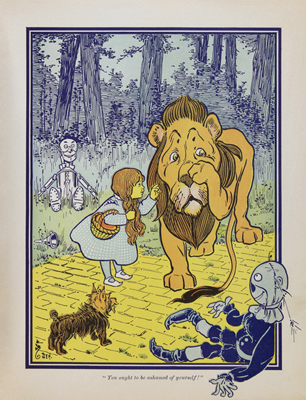
“You ought to be ashamed of yourself!”
(Illustration by W.W. Denslow
from the first edition of The Wizard of Oz.)
COWARDLY LION:
Courage! What makes a king out of a slave? Courage!
What makes the flag on the mast to wave? Courage!
What makes the elephant charge his tusk in the misty mist, or the dusky dusk?
What makes the muskrat guard his musk? Courage!
What makes the sphinx the seventh wonder? Courage!
What makes the dawn come up like thunder? Courage!
What makes the Hottentot so hot? What puts the “ape” in apricot?
What have they got that I ain’t got?DOROTHY, SCARECROW, & TIN WOODSMAN:Courage!COWARDLY LION:You can say that again!~The Wizard of Oz (movie, 1939)
Courage is an interesting word. Cour– from the Latin cor is cognate to the modern French word coeur, which means heart. The suffix –age denotes a product or sphere of action (as in leverage—the product of the action of a lever, or parentage—the sphere of parental influence). It can also mean the quantity of something (such as mileage). Put together, courage is the product of the actions of the heart, the sphere of the heart’s influence, or a quantity of “heart.” Any way you frame it, courage—overcoming fear—means, literally, “taking heart.”
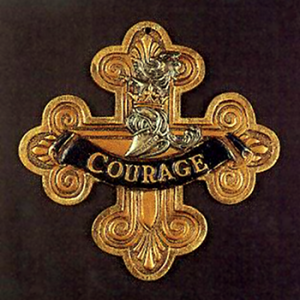
The Cowardly Lion’s Medal for Courage
(From the movie,
The Wizard of Oz, 1939.)
Is it a surprise that making dreams come true takes heart?
Courage is not merely the willingness to ruffle a few feathers—every iconoclast does that. It is the willingness to move forward, come what may. It is the willingness to stare fear in the face, and move forward anyway.
Courage is the main quality of leadership, in my opinion, no matter where it is exercised. Usually it implies some risk—especially in new undertakings. Courage to initiate something and to keep it going, [a] pioneering and adventurous spirit to blaze new ways…~Walt Disney (in Capodagli and Jackson. (2000). The Disney Way Fieldbook. p. 147)
As mentioned in another post, fear in creative endeavors often appear in three forms: fear of ridicule, fear of failure, and the fear that forms the basis of procrastination. I hope it’s not being circular to point out that the best way to fight fear is to take heart and have courage. As has often been observed, courage is not the lack of fear, but the strength to move forward in spite of it.
A curious thing happens when you courageously move through your fears: your courage increases.
We fail!
But screw your courage to the sticking-place,
And we’ll not fail.William Shakespeare, Macbeth (1605), Act I, scene 7, line 59
Disney’s Final “C”—Constancy
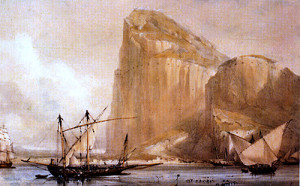
The Rock of Gibraltar—a symbol of constancy and persistence.
(from a 19th Century postcard.)
Constancy, Disney’s fourth C, is another word we don’t use much any more. From the Latin, constantia, it means, standing firm. A quick check of the thesaurus gives fidelity, faithfulness, commitment, dedication, devotion, dependability, reliability, and trustworthiness. You may have noticed that several of those synonyms beg to have an object: faithfulness to what? commitment to what? devotion to what? I believe that the constancy refers to stick-to-itiveness to the dream; don’t let the dream go easily.
It brings to mind another synonym: persistence. Calvin Coolidge, evidently in a rare burst of loquaciousness, said,
“Nothing in the world can take the place of persistence. Talent will not; nothing is more common than unsuccessful men with talent. Genius will not; unrewarded genius is almost a proverb. Education will not; the world is full of educated derelicts. Persistence and determination alone are omnipotent. The slogan ‘Press On!’ has solved and always will solve the problems of the human race.”
Another way to understand constancy is to consider its opposite. Inconstant means frequently changing, variable, or irregular, and brings to mind changeable, inconsistent, unsteady, unstable, capricious, and unreliable. Can you expect to achieve your dreams if you’re unreliable, inconsistent, or capricious?
“When the going gets tough, the tough get going.”~attributed to Knute Rockne
How does one obtain one’s dreams? By seeking them out with constancy; with persistence that toughs out the challenges and works around the roadblocks. Effort that is unsteady, unreliable, or inconsistent will fail. Press on to achieve your dreams!
© Copyright 2014 by S. Todd Stubbs. All rights reserved.

